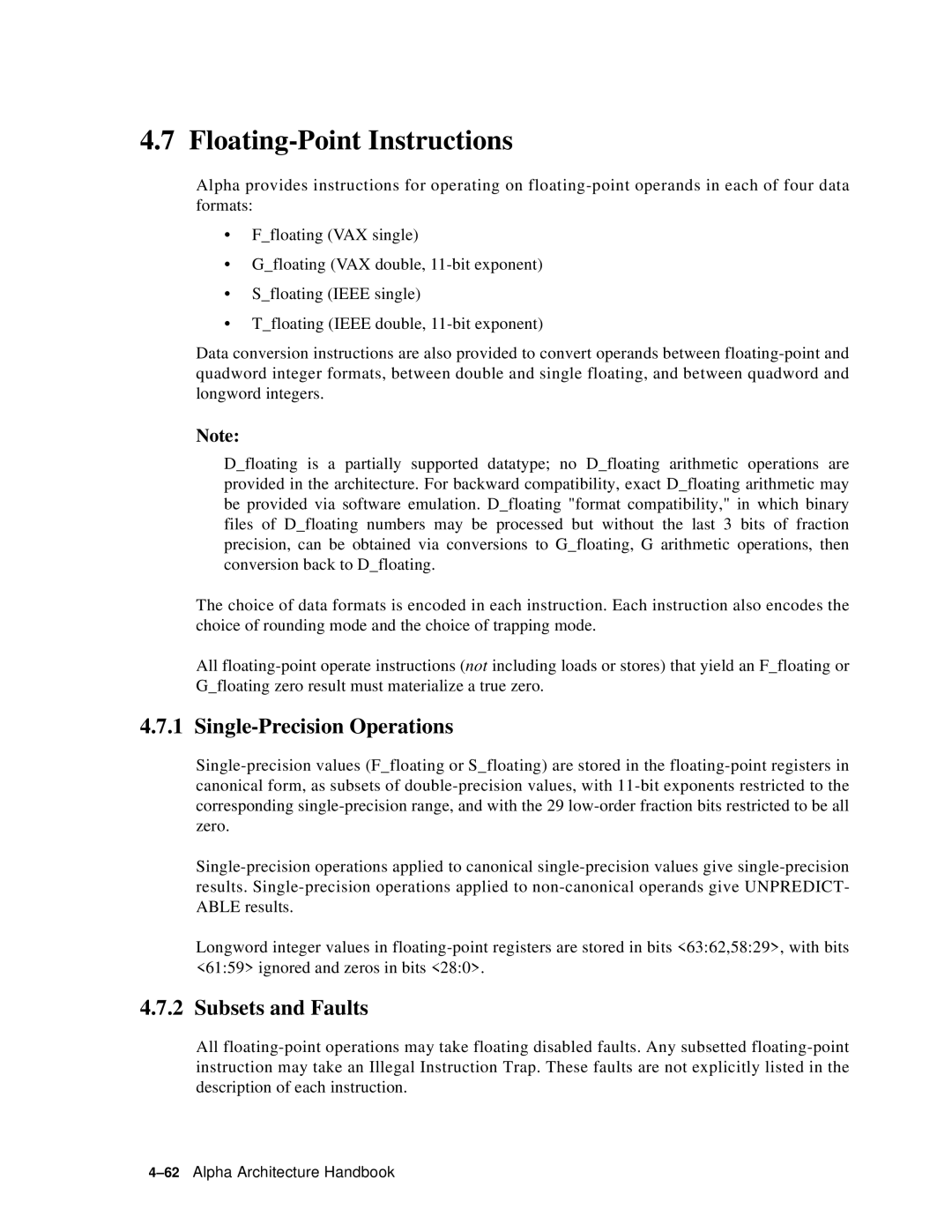4.7 Floating-Point Instructions
Alpha provides instructions for operating on
•F_floating (VAX single)
•G_floating (VAX double,
•S_floating (IEEE single)
•T_floating (IEEE double,
Data conversion instructions are also provided to convert operands between
Note:
D_floating is a partially supported datatype; no D_floating arithmetic operations are provided in the architecture. For backward compatibility, exact D_floating arithmetic may be provided via software emulation. D_floating "format compatibility," in which binary files of D_floating numbers may be processed but without the last 3 bits of fraction precision, can be obtained via conversions to G_floating, G arithmetic operations, then conversion back to D_floating.
The choice of data formats is encoded in each instruction. Each instruction also encodes the choice of rounding mode and the choice of trapping mode.
All
4.7.1 Single-Precision Operations
Longword integer values in
4.7.2 Subsets and Faults
All
